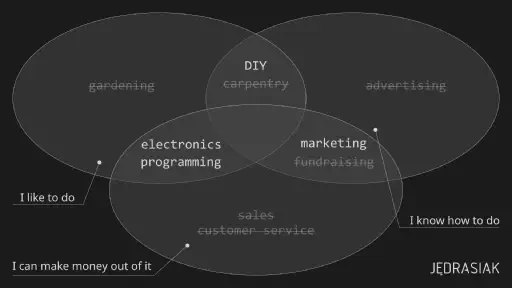When building a side project outside of work hours, fatigue will set in sooner or later, possibly accompanied by the urge to abandon your plans. Working on a project you’re passionate about will push back this point - possibly forever.

I spent a long time trying to find out what I loved doing. During that time, I tried out many jobs. I worked in hotels, helped with European funds, did advertising, carpentry, and managed marketing.
Here’s a description of the method that helped me to come up with the idea of creating an educational robot.
listing
List all your past activities, dividing them into the following categories:
- What do you like to do,
- What you know how to do,
- What others are willing to pay for.
List as many of your past activities as possible, including hobbies, volunteer work, student internships, and other non-paid activities.
filtering
From the list you’ve prepared, strike out activities based on the following criteria:
- Hard-to-scale actions;
- Activities the world doesn’t need or soon won’t need.
visualising
Plot the remaining activities on a Venn diagram of three intersecting circles.
analysing
Looking at the diagram, try to uncover a theme that intersects all three spheres - this will be the perfect industry for your side project! You can also use the help of AI, using the prompt below for GPT.
You're a career advisor. Here are my past activities divided into three groups: what I like to do, what I can do, and what others are willing to pay me for. Suggest five side project ideas (startups built outside of work hours) where I can use the knowledge and skills from as many of the topics provided. What I like to do: - DIY (designing new things) - Electronics - Programming What I can do: - DIY (designing new things) - Marketing What others are willing to pay for: - Electronics - Programming
sharing
Be sure to share the discovered theme of your side project – for example in social media.